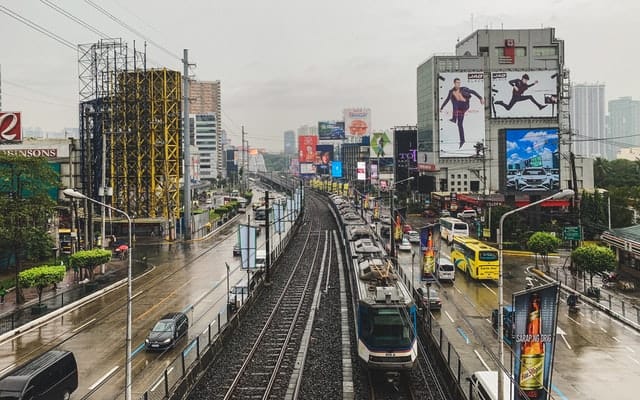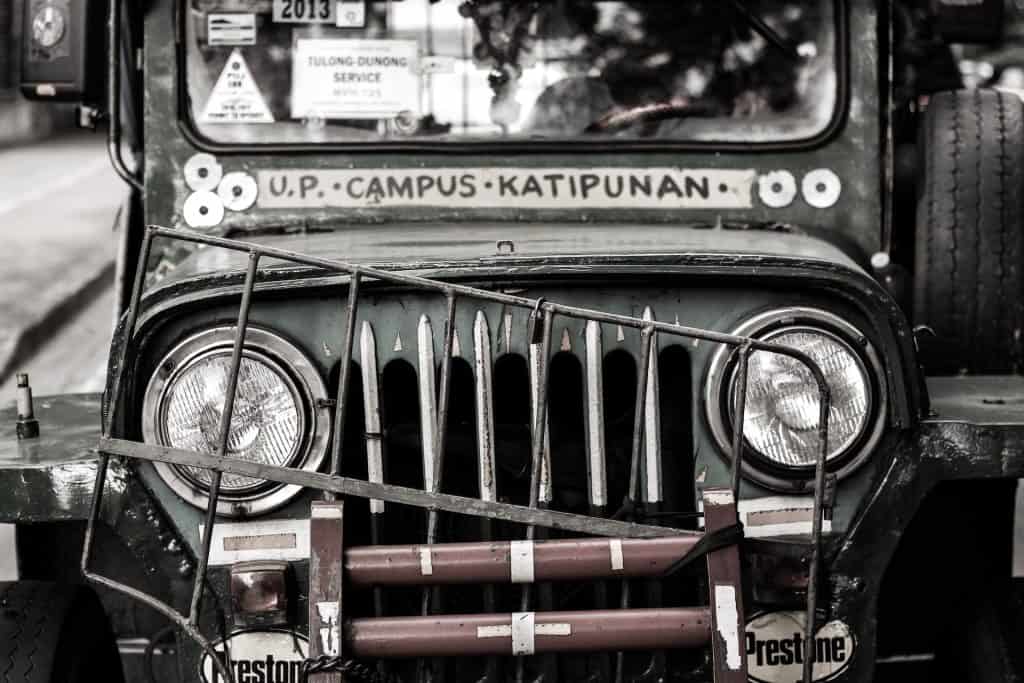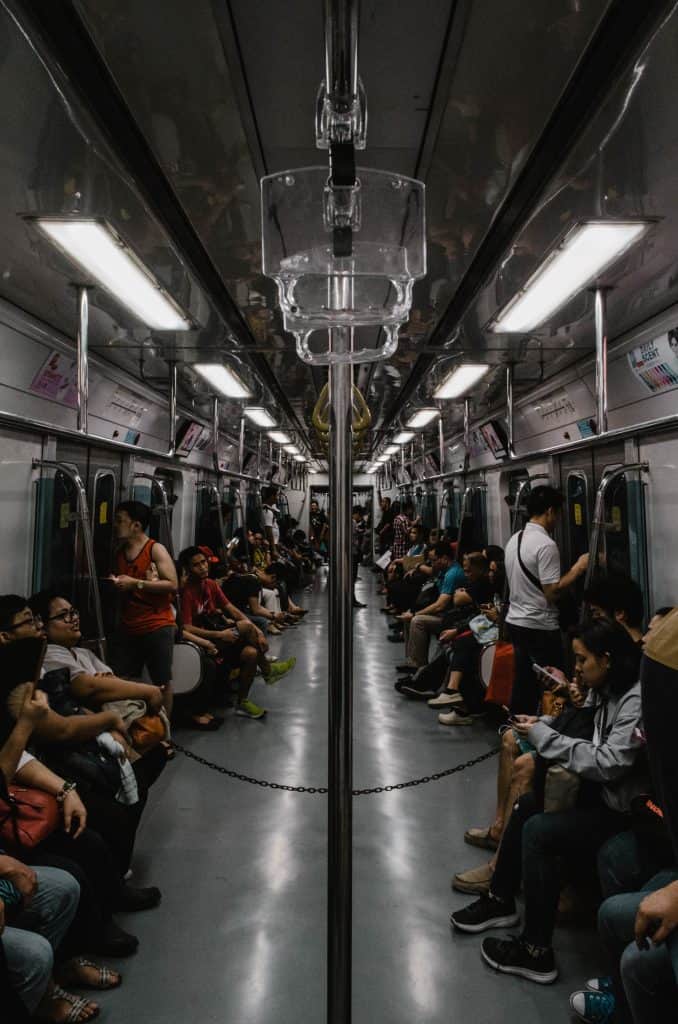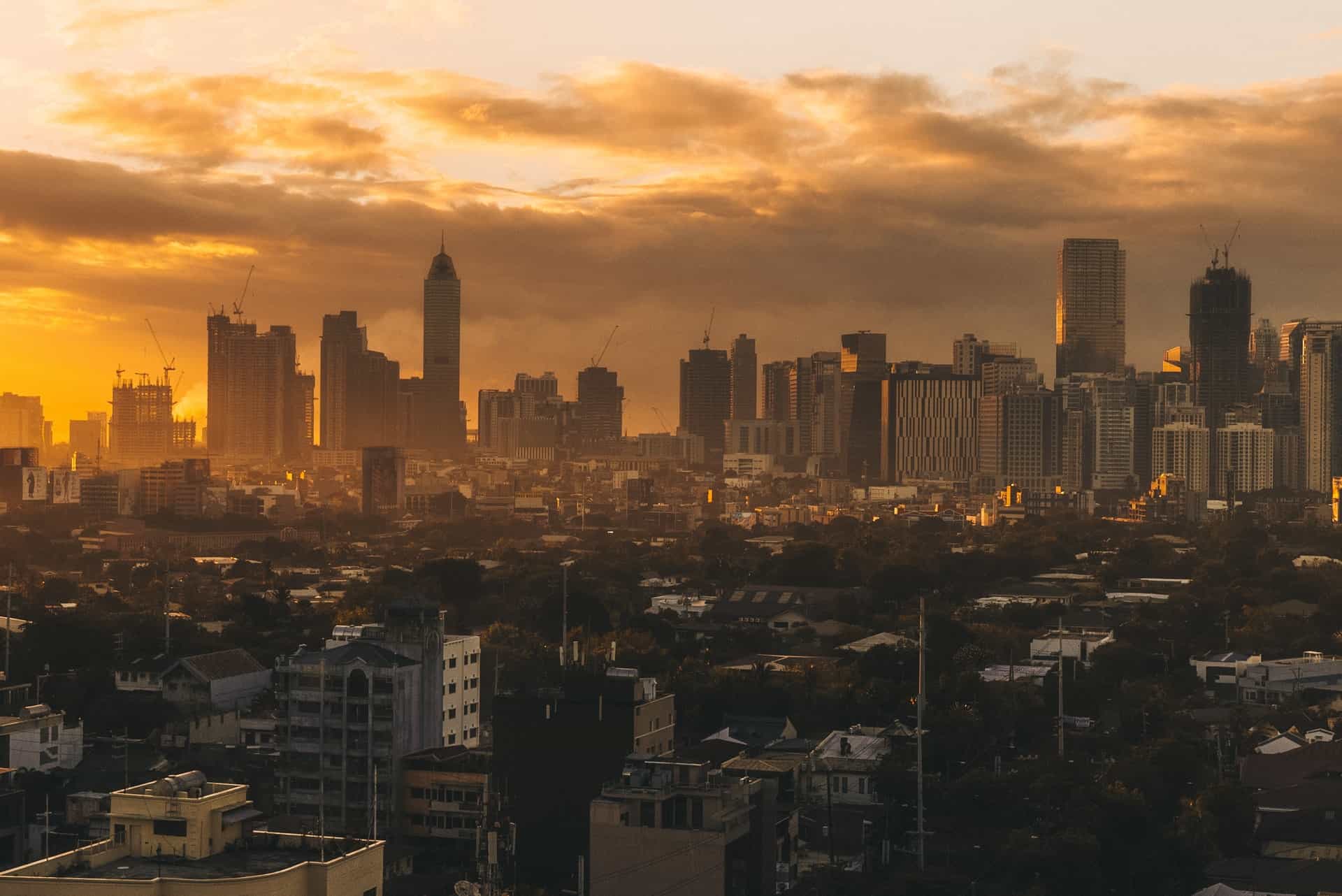The 3 Biggest Reasons Manila Traffic Is So Bad

Just about everyone who visits Manila, especially from the West, is floored by one thing the second they leave the airport. Not the heat, not the density, not even the unique and oddly pleasant BBQ-and-exhaust smell...but the traffic.
It even costs the Philippine economy about $70 million per day!
Every big city has congested roads, but Manila's traffic is particularly bad due to inefficient design (especially around U-turns and merges), a lack of good alternatives to driving, and weak enforcement of traffic laws. This permits and even necessitates a chaotic, free-for-all driving mentality. Current public transit projects will help, but aren't complete enough to replace car or rideshare use.
This is one of the main reasons Manila is known as a chaotic city. It will all sound familiar if you've traveled elsewhere in Southeast Asia. If not, then read on for this foreigner's take on the "why" of Manila's traffic woes.
Traffic lanes, lights & laws are weakly enforced
The first time you roll down EDSA, for instance, you'll be astonished—and perhaps a bit horrified—at the absolute disregard for lane lines.
One minute you're cruising along with three painted lanes, the next minute there are five cars side-by-side, and at least a handful of motorcycles making a death-defying squeeze in between them!
It doesn't take a civil engineer to realize that five cars jockeying for three horizontal positions is dangerous, and stressful, and one heck of a sure way to create bottlenecks.
Spread that out over hundreds of large roads, each stretching many miles or dozens of miles, and you have the quintessential Manila driving experience.

This ties in to the next issue.
Traffic enforcement does exist, but it's rare and lax. Road features like impromptu U-turns (more on that later) also require and perpetuate an uncooperative, free-for-all way of driving. So, not only does apathy toward rules of the road lead to a chaos, but there is neither a practical alternative nor significant enforcement.
But there are some notable exceptions. BGC for instance, is a whole lot less chaotic and really not too different from the driving experience around most "orderly" cities. The same goes for the busier parts of Makati, and occasionally even around some mall and high-rise complexes, where the sheer number of people converging on a small space means a handful of officers do effectively conduct traffic.
But the scarcity of these examples makes the point!
Manila transit lags far behind demand
Another issue in Manila is that while transit exists, it lacks capacity for all who want or need to use it. As a result, anyone with the option to drive is likely to do so, since multi-hour waits outside MRT and LRT station are, regrettably, not unheard of.
Compared to other large cities like Bangkok, it's frankly a drawback against Manila.
A related issue is the inadequate coverage of the transit network and the somewhat disconnected nature of its existing lines. Granted, some transit is almost unquestionably better than none, so that's not to imply that current transit was ill-advised.
But the truth of the matter is that Manila's an incredibly dense city with many scattered and varied commuting routes. Mass transit today covers just a tiny fraction of the volume and coverage needed to alleviate its traffic.

Along those lines, it's usually possible to get jeepneys to a transit station. But with long transit waits on top of inherently unpredictable jeepney timing, few people with a car are willing to bear the delays and uncertainty.
However, there is a bright side to the transit discussion.
A significant MRT expansion is long since under way. It will including long and desperately needed new lines that serve some of the city's most popular origins and destinations.
Along with Metro construction, it looks like new residential construction is encouraging density around points of good transit access. Manila doesn't exactly have the transit-oriented development that you see elsewhere, but at least some major new residential towers are deliberately planned to coincide with easy transit access.
(That does raise a major concern about equity. These are generally high-end developments, so those who can afford a unit in them can also afford a car, or at least a Grab ride when needed. So you still have a situation where many—probably most—who really need transit cannot afford to live within a quick trip of it. That's a topic for another day, but you can see why it may not help alleviate congestion in the long run.)
On the whole, the new MRT development will fill in some critical transit gaps. You can make a good case that it's too little, too late...but I'd say "better late than never" when it comes to addressing congestion!
It's hard to call whether new transit is going to reduce average door-to-door trip times, but it will almost certainly absorb a lot of the trip volume that would otherwise have ended up on the roads.
U-turns are disruptive and ubiquitous
Another major cause of Manila's bad traffic goes back to the first point about lane lines.
But drivers don't only compete with each other side-by-side. They also have no choice but to compete with oncoming traffic in—you guessed it—Manila's infamous U-turn slots.
Most of us are accustomed to a traffic light controlling U-turns, or at least a separated turn lane that feeds into the opposing roadway. In Manila, there are some of these, but they're actually rare. Practically speaking, U-turns happen whenever and wherever there is no divider between directions of travel.
One of the most irritating scenarios is when there are two lanes, or at least two painted lanes, in each direction...and a semi-truck needs to change course. It effectively blocks the entire roadway! Of course, the same thing happens more frequently but less dramatically with regular cars, too.
You'll notice within about 5 minutes of hopping in a car that people simply inch into oncoming traffic until the oncoming drivers stop enough for them to complete their U-turn. The danger is pretty obvious, but—almost miraculously—it usually works out safely.
Just the same, the disruption to traffic is massive. During peak hours, one single U-turn often causes thousands of feet of backups.
How tourists can avoid the worst of Manila traffic
How can you, as a traveler, minimize the impact of Manila's terrible traffic on the sights and experiences you've planned?
Well, on one level, you simply have to accept it as par for the course. Seriously. If you visit Manila hoping to find a loophole to avoid all the congestion, you're going to be severely frustrated.
Instead, I would suggest a couple of specific strategies that will help at least a little bit.
Avoid Manila's rush hour: mid-morning & all evening
The first, which is obvious but worth reiterating, is just not to travel during peak hours.
This applies worldwide, but in a city where traffic gets exponentially worse from its already terrible norm, the difference is astonishing.
Generally speaking, rush hour in Manila is around 7:00 to 9:30 a.m. and all evening from 5pm until night. It's weird to see such a long evening rush hour, but given how many people work jobs that track to North American or European time zones, it starts to make sense.
In any case, if you must travel at rush hour, this is when taking transit simply is not worth it. There might be some exceptions, but station lines often exceed one to two hours, and they're in stifling heat and close contact the entire time. That's obviously a major complaint among locals, and they in turn would not wish it on visitors!
Stay centrally to stay sane
The second tip is just another example of logistics 101. The more central your location, the traffic you'll need to fight. Not none, to be clear, just less.
The overwhelming majority of things to do around Metro Manila are in the City of Manila proper, Makati, perhaps BGC, and sometimes near the Mall of Asia. By choosing a location in one of those, and planning all your activities by location, you can stick to one round trip or a couple point-to-point trips per day. It's common for a couple miles to take 30 or 60 minutes, so believe me, that's enough!
Dealing with Manila's traffic on your visit
Manila's reputation for terrible traffic is well-deserved. We've seen that it's mostly a result of apathy toward road rules, a lack of traffic enforcement, unfortunate U-turn design, and inadequate (but thankfully improving) transit.
Not to mention that improvements generally require coordination between several independent cities, not just Manila proper.
This infamous chaos is perhaps what strikes visitors most.
That's valid, but also unfortunate. It's worth emphasizing that Manila is indeed worth visiting, at least for the right sort of traveler.
Amid all the chaos are countless warm, welcoming people and a plethora of worthwhile and interesting city experiences. Naturally it's also the perfect jumping-off point for whatever tropical destinations you want to explore.
To enjoy your time in Manila, remember to avoid rush-hour travel at all costs, and to keep your location central and your outings planned by neighborhood.
There's no question that you're going to spend time sitting in traffic, but with the right expectations and some minimal planning, it does not have to detract from your trip!




